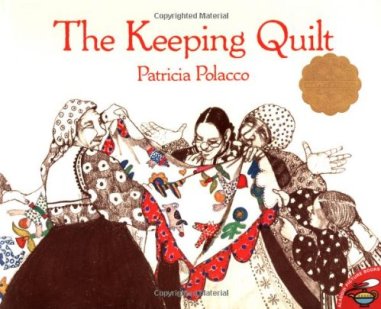I still recall my surprise as a kid to discover how unlikely animals cultivate symbiotic relationships. Particularly the crocodile and the Egyptian plover bird (for the longest time, I had no idea Tomie de Paola’s “Bill & Pete” was based on science)!
As fascinating as these studies are of working relationships in the animal kingdom, I think their value goes beyond observational science. An inquiry into symbiosis is a great way to get kids thinking about concepts like collaboration, relationships, and problem-solving.
That was one of the reasons I was so excited about receiving “Friends Stick Together” by Hannah E. Harrison from Penguin Young Readers, along with the invitation to participate in its book tour. It finally gave me the push to share the following resources to help students inquire into symbiosis.
Resource #1: “Friends Stick Together” by Hannah E. Harrison

Beginning with a definition that introduces the way symbiosis isn’t necessarily as clean as we might think, Friends Stick Together sets the tone that it takes time to learn to work well with those around us.

I especially loved the zany Levi the tickbird (his “epic” air guitar solos were my favorite). His over-the-top behavior, especially when contrasted with prim Rubert the Rhino, definitely reminded me of one of my childhood favorites, Tacky the Penguin.
I feel like it’s easy for these kinds of books on friendship to get overly didactic, but I feel like Harrison struck a good balance, thanks in large part to her humor. Be sure to check it out when it comes out
Resource #2: “The Wolf, The Duck, & the Mouse” by Mac Barnett & Jon Klassen
Ok, so this one is total make-believe symbiosis. But it’s still a fun way to get kids thinking about how we can rely on and help one another.

Resource #3: How Wolves Change Rivers by Sustainable Human
This resource is much more direct to the science of symbiosis; it’s a great launching point to discuss the complexity of relationships.
Resource #4: Symbiose by Rosalie Benevello, via The Kid Should See This
This beautiful stop motion is sure to spark a lot of conversation about the relationships between humans and nature.
Provocation Questions:
- What does it mean to have a symbiotic relationship?
- How does symbiosis impact our world? Our communities? Our schools?
- How does symbiosis in nature compare with symbiosis in humans?
- How is technology impacting symbiosis?
- What is our relationship to foster symbiotic relationships?
- What are the different perspectives on what it means to have a symbiotic relationship?
- How do our actions impact people around us?
featured image: DeathToTheStockPhoto


















